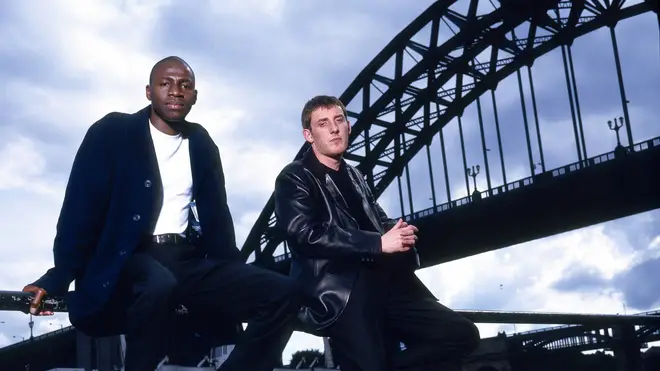On Air Now
Smooth Breakfast with Myleene Klass 6am - 10am
29 January 2021, 09:14 | Updated: 29 January 2021, 09:15

The Story of... 'Lifted' by Lighthouse Family
'Lifted' was one of the most-played songs of the 1990s, thanks to its uplifting message and summery vibes.
It launched the Lighthouse Family's career, cementing them as one of the most popular duos of all time.
But what inspired 'Lifted' and how was it made? Smooth caught up with Tunde and Paul to find out everything there is to know about the classic tune.
Watch the full video interview with the band above, and find out more below:
'Lifted' was written by Lighthouse Family members Paul Tucker and Tunde Baiyewu, alongside music producer Martin Brammer.
The song came about after the duo had a lukewarm reaction to their first few tracks from their record company.
"We got the train back to Newcastle. We were quite despondent. We were a little bit down in the dumps," Paul told Smooth.
"And I was swearing. I was like, 'They don't know what they're talking about. What do they know?' But we were at a bit of a make-or-break point. They wanted us to go and make some more recordings, and if those recordings were good, they’d give us a deal – a proper deal.
"I kind of thought: 'We’ve got to raise our game here.' And that is when we started working on 'Lifted'. It was almost like, our backs were against the wall when we were doing it. It was about pulling ourselves out of it."

Paul told us that the song was inspired by a breakup back when he was living in Newcastle in the early 1990s.
"I went out the studio, and I walked down to the quay side in Newcastle, and it had been snowing," he said. "It was really, really deep snow. It was January.
"I just went and sat on a bench, and I wrote the first verse. I didn’t write the second verse then. I wrote, 'I’d really love to be alone without all the ache and pain and the April showers, but it ain’t long before I long for you like a ray of hope coming through the blue.'
"That was kind of channelling a breakup, really. That was a breakup that was still a little sore.
"The second verse was later. I mean, the second verse: 'It’s undisturbable, the peace found in in a bright blue space up above the clouds.' That kind of all rolled off in one: 'Where everything is understandable, you don’t have to say anything too loud.'
"It was like an idea of heaven, it was just peaceful, you know? That came afterwards.
However, the demo had a different line!
"And then we had a second verse when we first did the demo of the song, but it just wasn’t as good, was it? I think it was something like: 'I’ve been in love, but I’m lonely now, because I ain’t no saint, and I can’t say no.' Crap!"

Lighthouse Family - Lifted
Paul told us that the video was Zabriskie Point and Death Valley Junction in California.
He said: "Actually, the place where we were walking at the beginning of that video, it’s the same place where they shot the Joshua Tree cover, but we didn’t realise that until years later.
"The other thing is, it was exotic but it was… The mad irony of it was, it was probably the least expensive video we’ve made.
"Because you’re in California and because there’s so many film crews in Hollywood, and because the hotels we stayed in, we stayed in the worst hotels in Las Vegas. And Las Vegas is a place where you can get hotels for free.
"It was shot on 35mm film, and the idea was to get something that looked more cinematic than a standard pop video. That was fascinating.
"There were some fascinating places and people. There was this woman called Marta Beckett. In the second verse of the video, there’s this opera house with a kind of piano in it.
"There was this woman who lived in New York. She was a dancer, and she said, 'I’m going to buy a theatre in the desert because it’s so cheap, and people are going to come and see me dance.'
"So she bought this theatre in the desert. She sort of put posters up, that she’s going to be dancing. And nobody came. So she just painted all these people on the wall. And she’d do these performances every night to an empty opera house."
It was first released in spring 1995, but only reached the top 70 in the UK.
It was then given a re-release in early 1996, peaking at number four. It also charted across Europe in the same year.